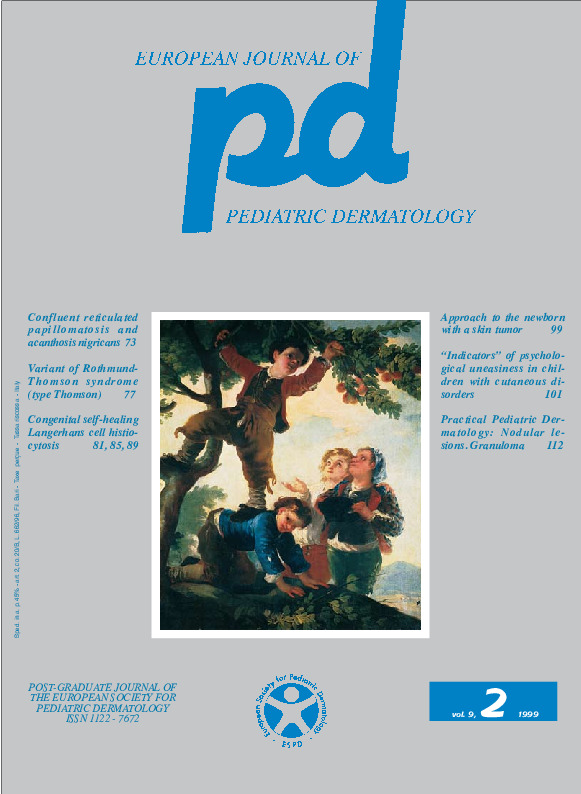Congenital self-healing reticulohistiocytosis (Hashimoto-Pritzker’s disease).
Downloads
How to Cite
Selvaag E., Roald B. 1999. Congenital self-healing reticulohistiocytosis (Hashimoto-Pritzker’s disease). Eur. J. Pediat. Dermatol. 9 (2):85-8.
pp. 85-8
Abstract
A three-months old boy presented at our dermatological department with a bluish-red, 3 centimeters in diameter soft tumor, on his right buttock. At birth there had been additional bluish papules on the scalp, the left palm and the right sole, all of which had regressed and left atrophic hyperpigmented macules. He was born anemic and had elevated liver enzyme values. Both conditions normalized within months. Bone marrow aspirations and biopsy showed no pathological findings. Histopathology revealed a multinodular infiltrate in middle and deep dermis, clearly separated from the epidermis with a rim of normal looking stroma. The nodules comprised histiocytic cells, some of which multinucleated, and some lymphocytes. There were scattered mitoses and, focally, a large number of apoptotic cells. The majority of the histiocytic cells were identified as Langerhans cells by positive immunoreactivity for anti-S-100 protein, positive staining with biotinylated peanut agglutinine and the presence of Birbeck granules by electron microscopic investigation. The free subepidermal rim, the nodularity of the infiltrate together with the mixed content of Langerhans cells and lysozyme-positive phagocytic cells do not support the diagnosis of Letterer-Siwe type histiocytosis. On the other hand, these findings are consistent with the diagnosis of congenital self-healing reticulohistiocytosis Hashimoto-Pritzker. The latter diagnosis was also supported by the clinical follow-up with rapid involution of the lesions, which disappeared and left an atrophic scar within four months.Keywords
Langerhans cell histiocytosis, Hashimoto-Pritzker disease

